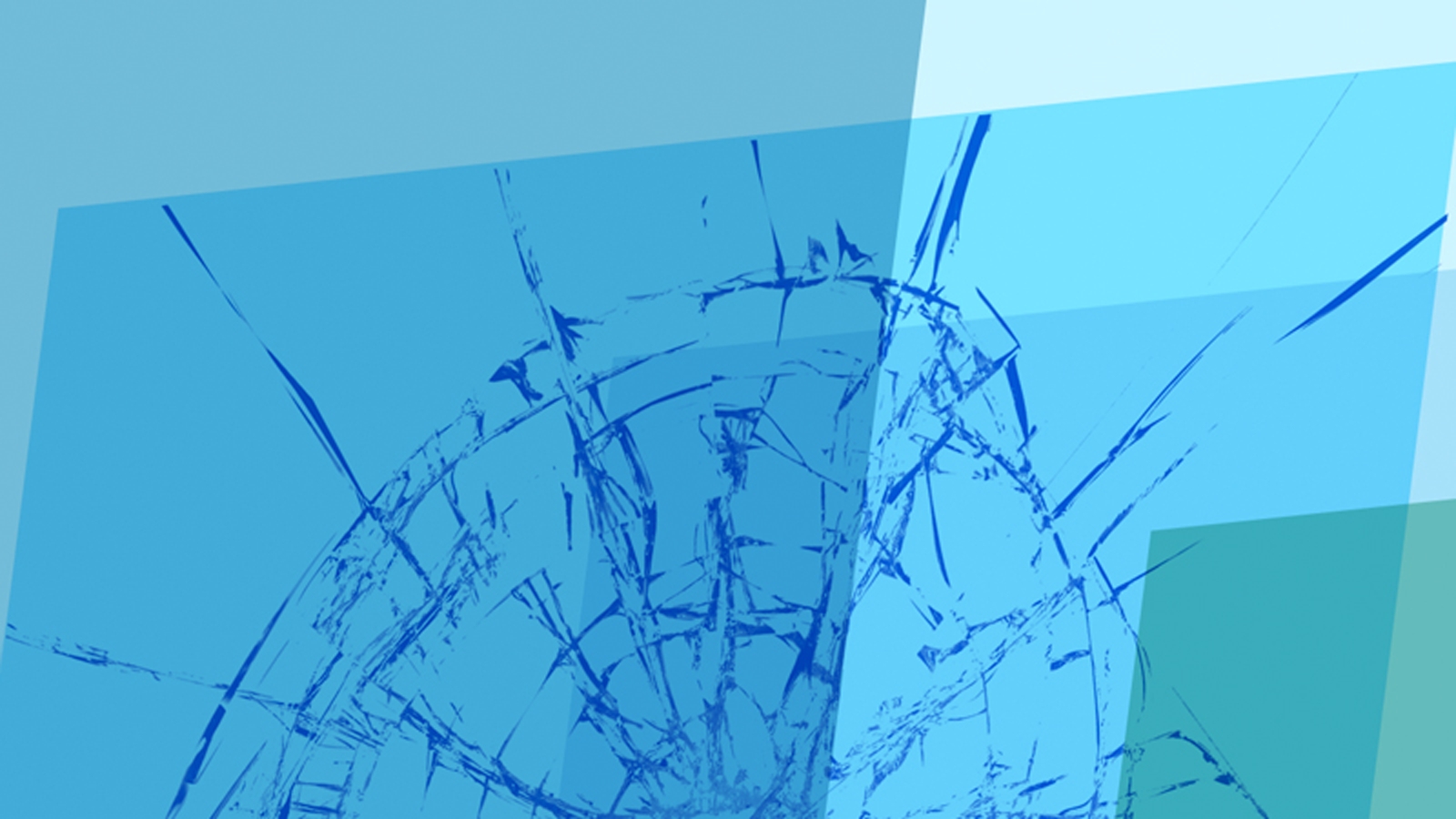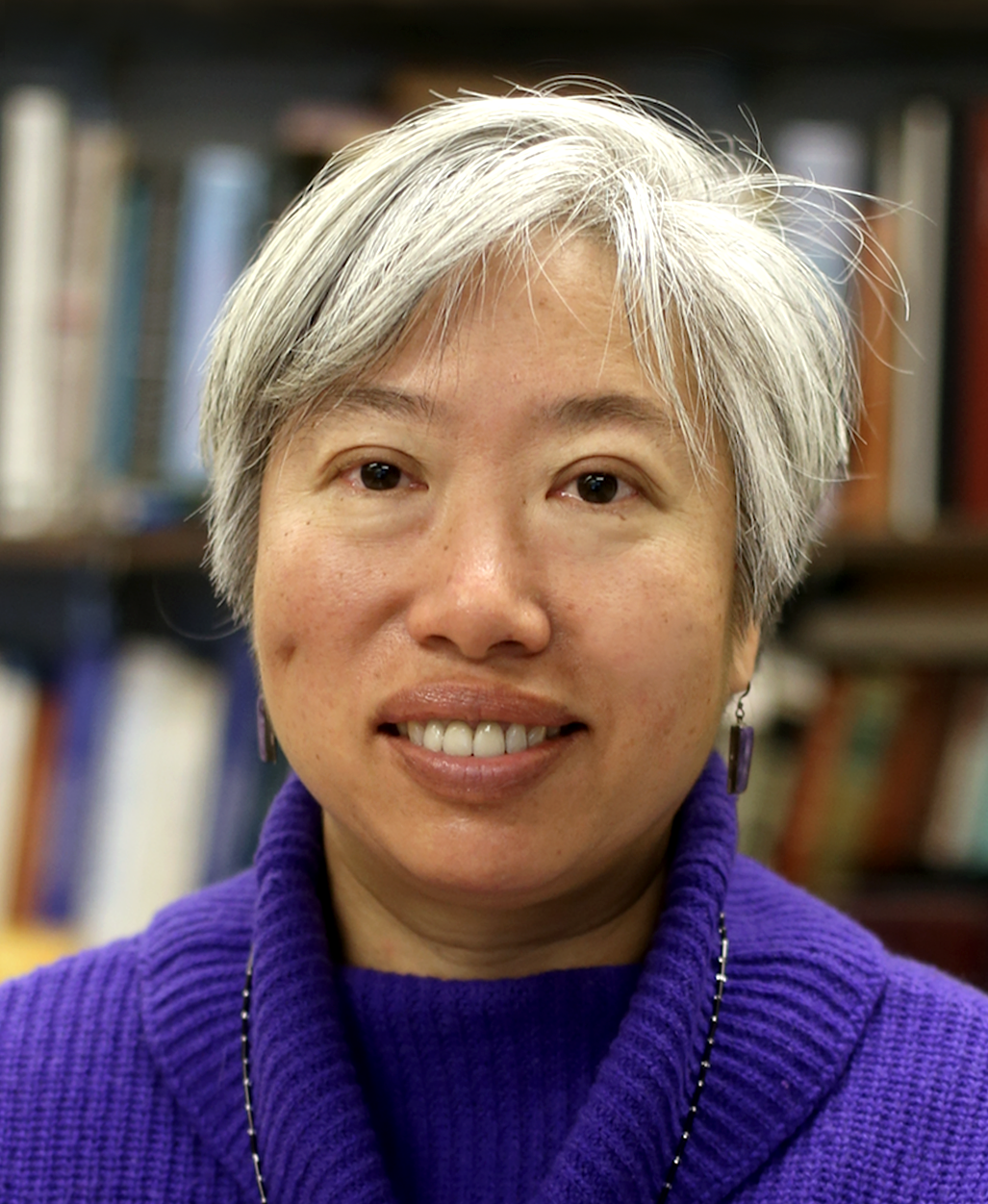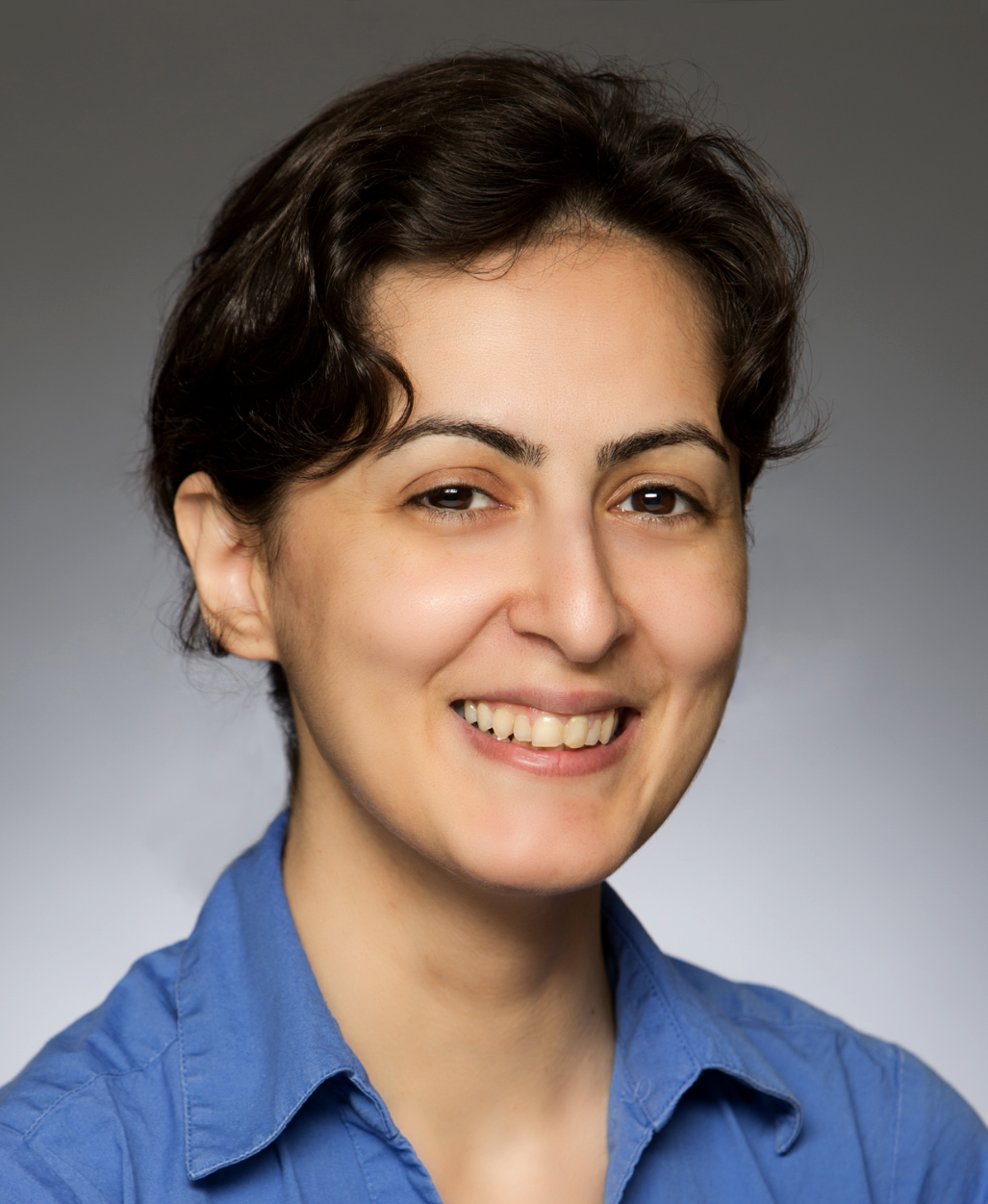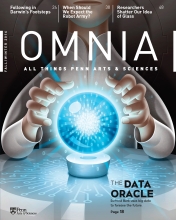Researchers Shatter Our Idea of Glass
Over three millennia ago, perhaps inspired by the aftermath of volcanic eruptions, humans first began to liquefy sand in an inferno, sculpt it into a vessel, and cool it into glass. All these years later, glass remains somewhat mysterious. Hovering between states, glass may appear to be solid, but the science behind glass reveals it is anything but.

Zahra Fakhraai, assistant professor of chemistry, explains further. “If you waited far longer than the age of the universe, you would probably discover that glasses are actually dense, incredibly slow liquids.”
The question of how a material exists as a solid when its structure is so disordered is known as the glass problem. The answer affects many aspects of science, but it has been elusive for decades. Recently, through computational calculations and laboratory experiments, Liu and Fakhraai have both made significant contributions to understanding the intricacies of the glassy state of matter.
When you think of glass, Fakhraai suggests imagining a subway platform at rush hour, jammed with hundreds of people. No one lines up in rows or maintains a fixed personal space. The arrangement is random, disordered with riders locked in place, solid-like, unable to move until the person next to them moves. In contrast, a solid typically forms as a repeated pattern of units, like the laying of bricks to build a wall.
The people in the subway analogy don’t have to stand in just for atoms in a pane of glass. Any liquefied material can be turned into a glass. And most transparent plastics, made from polymers, are classified as glassy.
A key attribute of solids is their ability to remain unchanged: Salt is always salt, and diamonds are forever. Glass can change its properties over time—almost imperceptibly—over millions of years; pine resin turns into amber. The movements of molecules that enable this transformation are part of the challenge facing researchers. Theoretical physical scientists possess a range of tools they can employ to study a system in equilibrium, but for glasses, which are far from equilibrium, few exist. Experimentally, traditional tools have failed to overcome the impasse. So Liu and Fakhraai are creating new ones.
“When you think of glass, imagine a subway platform at rush hour, jammed with hundreds of people. The arrangement is random, disordered with riders locked in place, solid-like, unable to move until the person next to them moves.” — Zahra Fakhraai
Fakhraai studies thin films of glass made up of material that Penn undergraduates create in their organic chemistry laboratory class. The organic material is vaporized and then layered onto a surface cooled to a temperature below which the material solidifies into a glass. At this temperature, she determined that the molecules at the surface could move fast enough to maintain equilibrium. This motion allows denser packings called stable glasses.
Fakhraai deposited thinner and thinner films and found that at about 30 molecules the solidified glass behaves like a liquid. She compares this process to selectively removing people from that subway platform until the remaining riders have enough room to relax.
These stable glasses are important for a number of reasons. First, the stable glasses dispel many theories about molecular interactions. Researchers have believed that molecules only associate with a few of their neighbors, but beyond that the properties of the molecules forming the bulk are not usually shared by those at the surface. Fakhraai’s results tell us that if the crowd is small enough and cold enough, the influence of a few molecules can extend throughout the group.
The existence of these stable glasses also means that scientists can study a glassy material that behaves like a glass aged millions of years. There has never been an opportunity to do that before.
Fakhraai earned a $1.2 million grant this September from the National Science Foundation based on her findings. The grant provides funding for her and two other Penn colleagues, Robert Riggleman, assistant professor of chemical and biomolecular engineering in the School of Engineering and Applied Science, and Patrick Walsh, Alan MacDiarmid Term Professor of Chemistry, to continue to study the properties of these thin films. They hope to understand how to optimize the films in coating applications on electronic devices, such as enhancing durability or conductivity. In addition, the nanometer scale data from Fakhraai’s group gained a second life as part of a massive collection of information, co-led by Liu, on the mechanics of disordered packed materials.
Fakhraai and Liu are members of the Laboratory for Research on the Structure of Matter (LRSM) which is part of the NSF-funded Materials Research Science and Engineering Center (MRSEC) at the University of Pennsylvania. By pooling the brain power of team members from multiple disciplines, MRSEC participants aim to build a foundation for future technologies by bringing into focus basic materials science problems that have been murky for decades.
“We got a bunch of people at Penn together—theorists and experimentalists—and we looked at a bunch of different glassy systems for disordered solids. These ranged from amorphous carbon and metallic glasses that are made out of atoms, to disordered packings of nanoparticles, to disordered ordered suspensions of colloids, which are at the microscale, to collections of grains on the millimeter scale,” says Liu.
The results of that data analysis were recently submitted to the journal Science and reveal a previously unknown, astounding correlation.
“We can now predict when glass is going to break,” says Fakhraai. Meaning Penn researchers discovered that disordered solids have a common inherent trait that determines when the solid will fracture. The trait, known as yield strain, can be used to determine when to expect a defect to form in any disordered solid regardless of its composition. For example, they determined that the strain at which a pane of glass breaks is approximately the same as the strain at which a pile of snow is likely to avalanche.
The team reached this groundbreaking conclusion by applying a structural quantity, called softness, that Liu identified when applying machine learning to the glass transition problem. Liu trained her computers to look for structural features in a model glass that correlate strongly with its dynamics.
“The glass transition is characterized by the dynamics; it is all about dynamics,” says Liu. “The thing that’s been difficult is to find a structural quantity that just depends on how the particles are arranged that correlates at all with the dynamics.”
Softness is that quantity; it is an indication of how likely a particle is to rearrange given its structure.
All of these findings provide points from which researchers can triangulate to map out the glass transition. Liu says that until now the only way to try and understand a glassy solid was to look at an equilibrium liquid, which provided little perspective.
Comprehending glasses and the glass transition is considered one of the greatest challenges in physics. Resolving it could help scientists develop new materials and clarify foggy areas of astrophysics, geophysics, biology, and chemistry.
With so many new tools at their disposal, the researchers are poised to edge science closer to understanding glassy solids. When she reflects on their disordered solids work, Liu focuses first on the close collaboration with her colleagues. “I think one of the things that is really unprecedented about the project is how many people worked on so many different systems towards a common goal. We learned something that we could never have discovered individually.”





